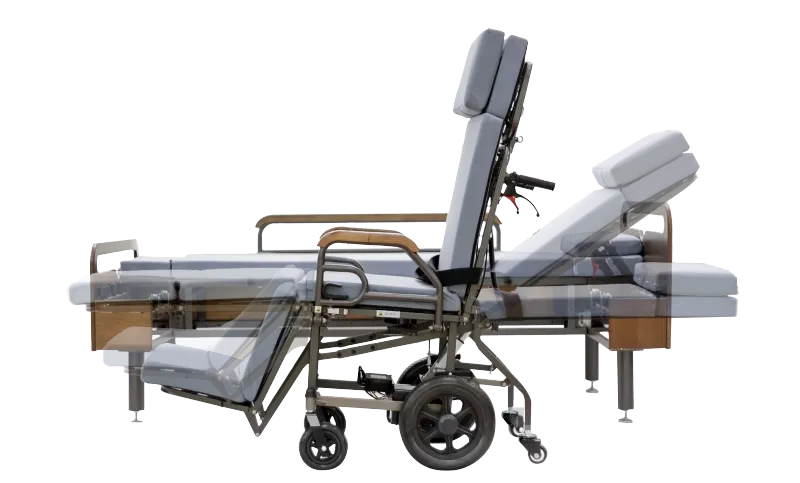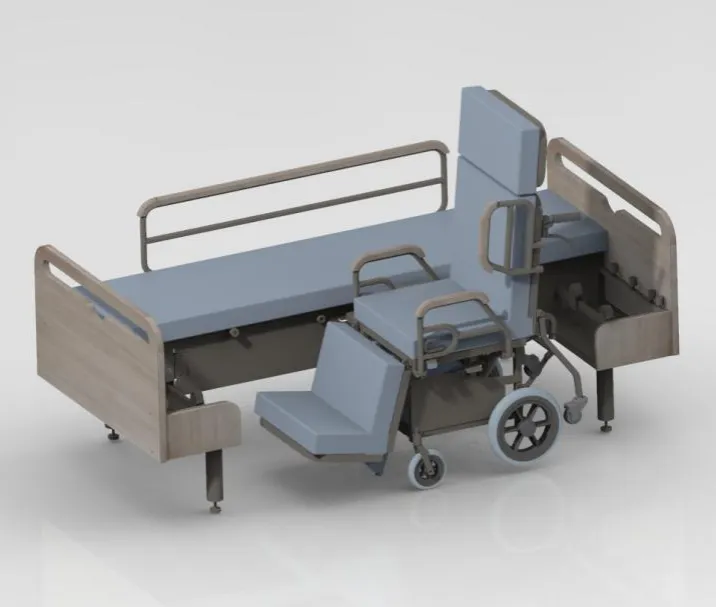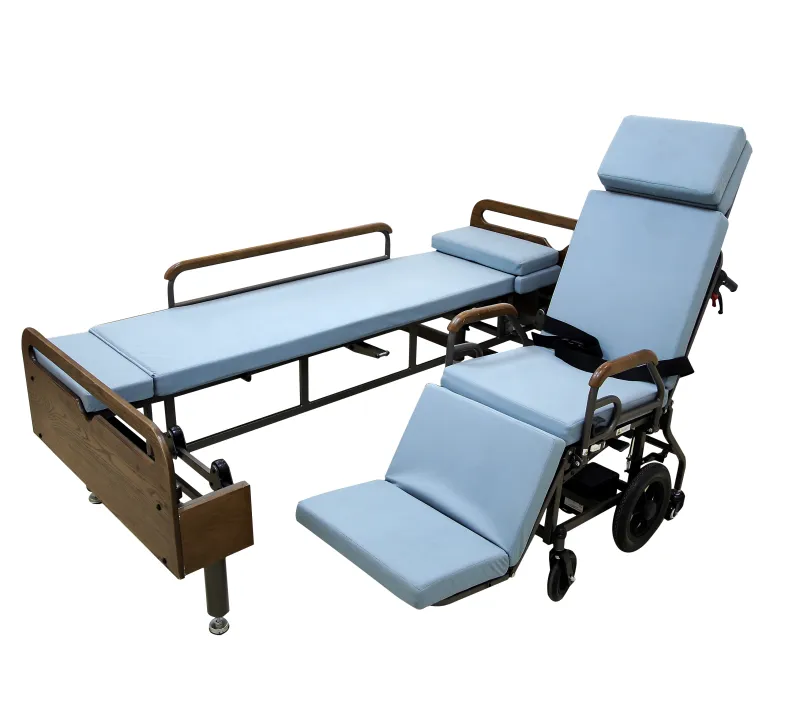
Do doctors recommend adjustable beds for home healthcare patients?
2024-11-22 15:30
Adjustable beds are gaining more and more attention from patients and healthcare professionals in the home healthcare space. The versatility and flexibility of this bed make it a good choice for many patients, but it is not for everyone. This article will take a deep dive into what an adjustable bed is, which patients do or do not need it, and whether doctors recommend adjustable beds for home healthcare patients. In addition, we will also analyze the health benefits, size, weight, price and other factors of adjustable beds in detail.

What is an adjustable bed?
An adjustable bed is a bed that can adjust the height of the head and foot of the bed according to the needs of the user. This bed is usually equipped with an electric or manual control system, which allows the user to easily adjust the angle of the bed for optimal comfort and support. Adjustable beds are widely used in hospitals and home care settings, especially for patients who need to rest in bed for a long time.
Adjustable beds were originally designed to provide additional comfort and functionality to help patients relieve back pain, improve breathing, reduce the risk of pressure sores, and provide better sleep quality. With the development of technology, adjustable beds are no longer limited to medical use. Many healthy people also choose this bed to enhance their sleep experience.
Who needs an adjustable bed?
In a home health care setting, adjustable beds are often recommended for patients with specific medical needs. These patients include, but are not limited to: patients with chronic back pain, patients with breathing problems, patients with acid reflux, patients with limited mobility or bedridden patients, and patients with circulation problems.
● Patients with chronic back pain: Adjustable beds allow patients to adjust the angle of back support, thereby relieving pressure points and pain.
● Patients with breathing problems: For patients with sleep apnea or other breathing disorders, elevating the upper body can help improve breathing.
● Patients with acid reflux: Adjustable beds can elevate the patient's upper body, thereby reducing symptoms of acid reflux.
● Patients with limited mobility or bedridden patients: These patients may need to adjust the height or angle of the bed for nursing, feeding, or transfers.
● Patients with circulation problems: By elevating the legs, blood circulation can be improved and leg swelling can be reduced.
These patients often face special care needs in their daily lives, and adjustable beds can significantly improve their quality of life.

Who does not need an adjustable bed?
Although adjustable beds can benefit many patients, not all patients need or are suitable for them. Here are some patient situations that may not need an adjustable bed: healthy patients without special care needs, patients with mild discomfort, and patients with limited budgets.
● Healthy patients without special care needs: For patients who do not need to stay in bed for a long time or do not face physical limitations, a traditional bed may be more appropriate.
● Patients with mild discomfort: If a patient's symptoms can be relieved by pillow or mattress adjustments, they may not need an adjustable bed.
● Patients with limited budgets: Due to the higher price of adjustable beds, some patients with limited budgets may choose a more economical solution.
These patients may consider price, space usage, and actual care needs when choosing a bed, and may not necessarily need an adjustable bed.
Do doctors recommend adjustable beds for home health patients?
Doctors' recommendations often depend on the patient's specific medical condition. Doctors often recommend adjustable beds for patients who are bedridden for a long time and need additional support or a specific angle to relieve symptoms. This bed can effectively help patients maintain a proper posture, reduce discomfort, and promote recovery. Additionally, doctors may recommend an adjustable bed for patients who have breathing problems, acid reflux, or poor circulation to better manage these health issues.
However, doctors' recommendations are not one-size-fits-all. Doctors usually consider the patient's medical history, current condition, and financial ability before making a recommendation. Therefore, it is best for patients to discuss their needs and expected results in detail with their doctors before choosing an adjustable bed.
Are adjustable beds good for your health?
The health benefits of adjustable beds have been proven by many studies and practices. These beds not only provide extra comfort, but also help patients relieve some common health problems.
First, adjusting the angle of the head of the bed can improve breathing function, especially for those with breathing problems or sleep apnea. By raising the upper body, the airway is more open, thereby reducing the frequency of snoring and breathing interruptions.
Second, for patients with acid reflux problems, raising the head of the bed can effectively prevent stomach acid from flowing back into the esophagus, reducing burning sensations and discomfort. In addition, the ability to elevate the legs can also help improve blood circulation, especially for those who are at risk for leg swelling or blood clots.
Finally, regularly adjusting the angle of the bed can help prevent pressure sores, especially for patients who are bedridden for long periods of time. By reducing pressure on specific areas, skin tissue is better protected.
How much does an adjustable bed weigh?
The weight of an adjustable bed varies by brand and model. Generally speaking, standard adjustable beds weigh between 50 and 150 kg. Lighter beds are often made of aluminum or other lightweight metals, while heavier beds may be made of steel or other sturdy materials to provide additional support.
Weight not only affects the portability of the bed, but may also affect its stability and durability. For families who need to move the bed frequently or use it in a small space, a lighter adjustable bed may be more suitable. For patients who need to be fixed in one position for a long time, a heavier bed may provide better stability.

What are the dimensions of an adjustable bed?
The dimensions of an adjustable bed are similar to those of a regular bed, usually available in single, double, and king-size sizes. Standard single adjustable beds are usually 90 cm wide and 200 cm long, while double beds may be 150 cm wide and 200 cm long.
The size should be determined by the patient's height and weight as well as the amount of space available. For patients who need to share a bed with a partner, a double bed may be a better choice, while for single use and limited space, a single bed is more economical and practical.
How much do adjustable beds cost?
Adjustable bed prices vary greatly depending on features, brand, and materials. Basic manual adjustable beds usually cost between $500 and $1,000, while high-end models with electric systems and advanced features can cost more than $3,000.
For families with limited budgets, it may be wise to choose a basic adjustable bed or consider the second-hand market. However, for patients who need specific features or have higher comfort requirements, investing in a high-quality electric adjustable bed may bring longer-term health benefits.








